
Perennial Forbs Around Las Vegas, Vegetation Around Las Vegas
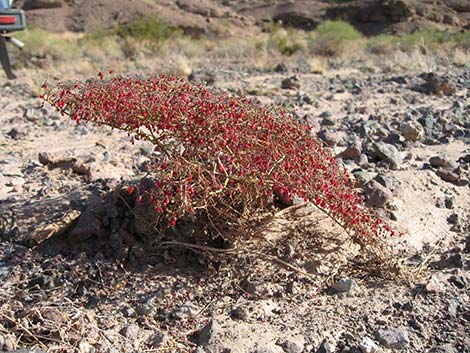 |
General: There are a variety of perennial buckwheats (Eriogonum spp.) often with upright or mounded, finely branched stems, and often with a reddish cast to the plant. The flower parts are in sets of three. There are many species of buckwheats, and as a group, most are difficult to identify. For non-experts in the genus, often it is best to just let them go as "buckwheats." Perennial buckwheats are common components of vegetation communities in dry, well-drained sandy and gravelly areas on desert flats, bajadas, and moderate slopes in the lower mountains in the Lower Sonoran (Creosote-Bursage Flats) and Upper Sonoran (Mojave Desert Scrub) life zones. |
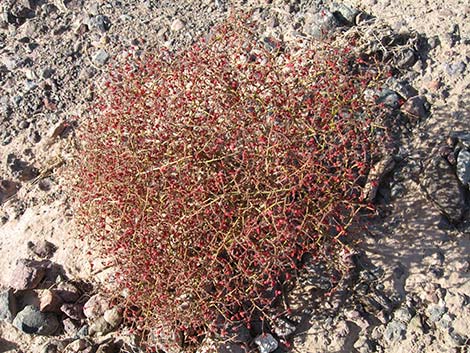 |
Family: Buckwheat (Polygonaceae). Other Names: Plant Form: Forb. Usually a single main stem with many terminal branches and many tiny flowers. Height: |
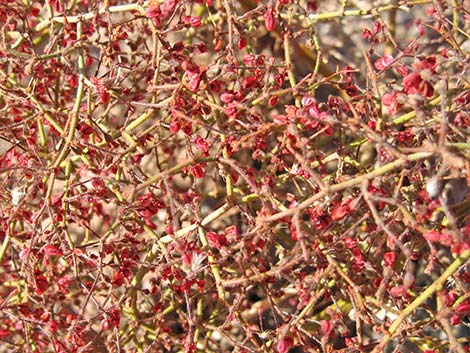 |
Stems: Narrow Leaves: Usually only a basal rosette Flowers: Blooms in the spring, also sporadically throughout the summer and fall in response to rain. Inflorescence: many slender branches, upright and spreading. Flowers tiny, oblong, 1–3 mm, yellow; from terminal stems. Seeds: Achene; small (2 mm). |
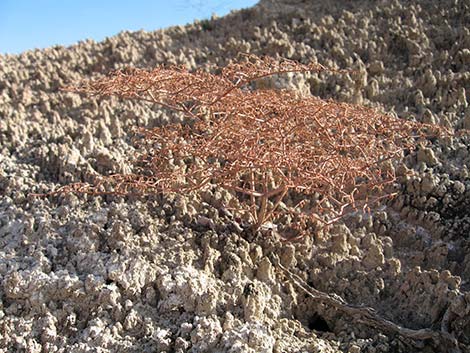 |
Habitat: Dry, well-drained sandy and gravelly on desert flats, bajadas, and moderate slopes in the lower mountains. Elevation: Distribution: Comments: |
 |
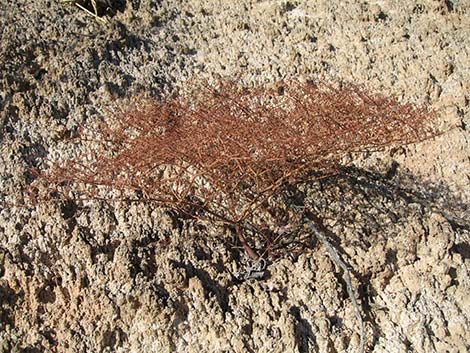 |
Note: All distances, elevations, and other facts are approximate. Names generally follow the USDA database.
![]() ; Last updated 211227
; Last updated 211227
| All Perennial Forbs | Plant Species Index | Glossary | Copyright, Conditions, Disclaimer | Home |